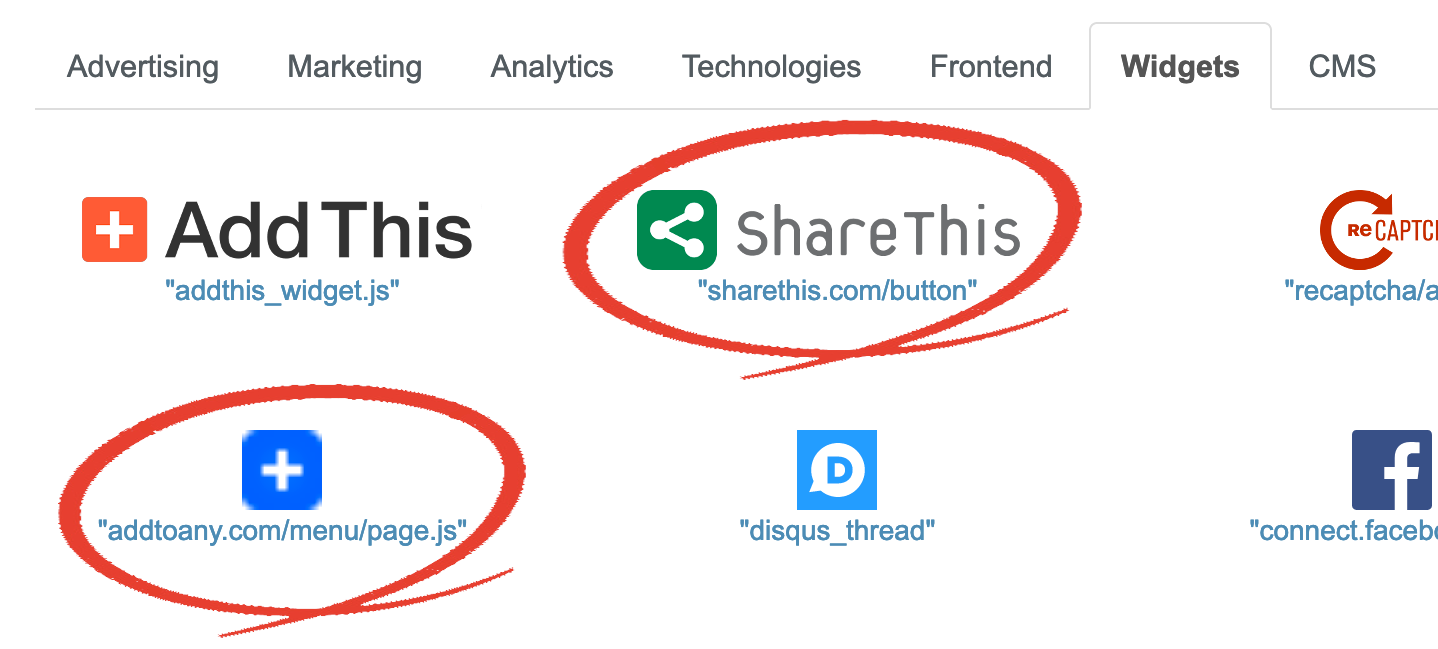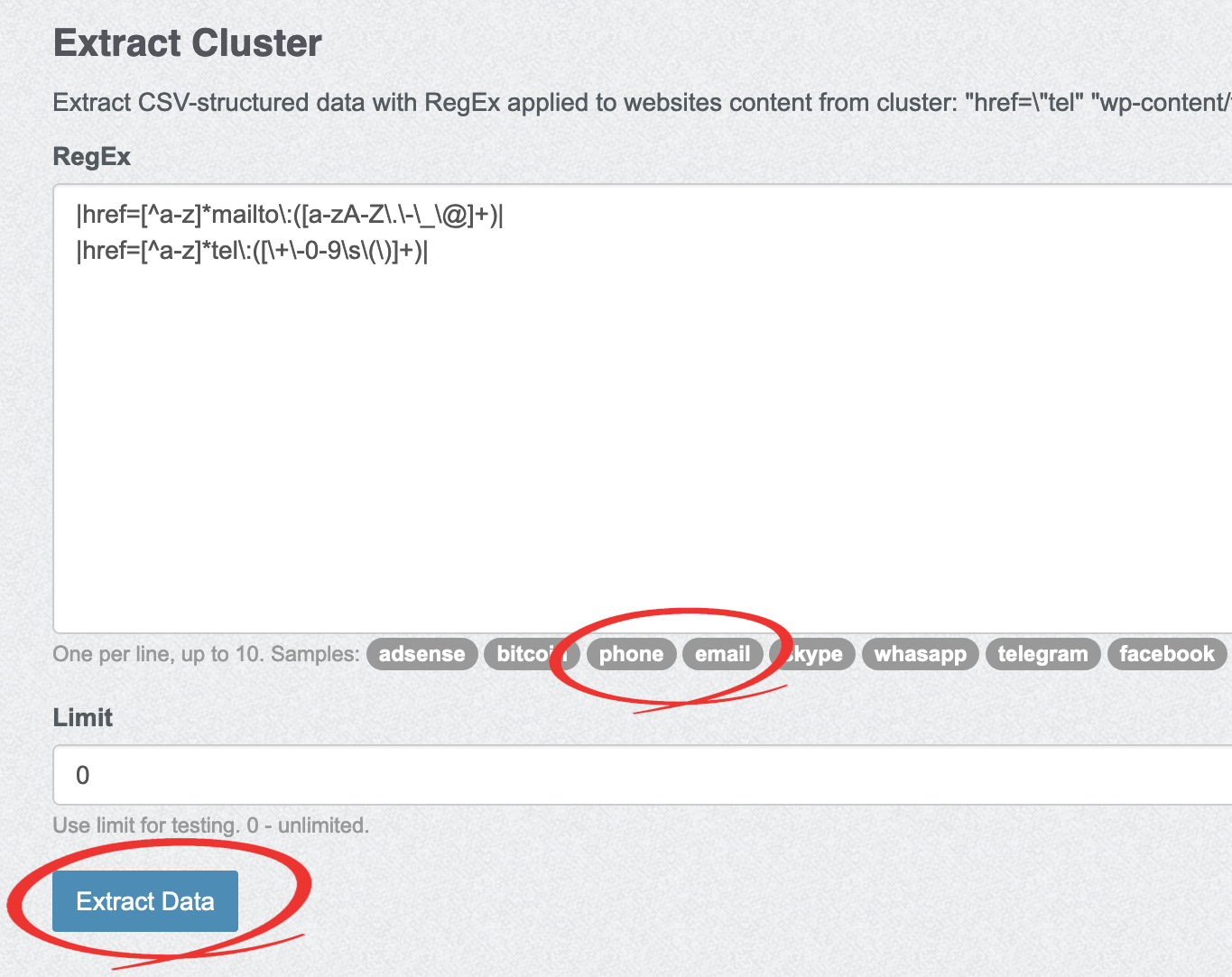About Clusters
"Cluster" is a set of unique domain names indexed by PublicWWW. Operations with clusters available for registered users.
There are three ways to create cluster:
- Export domain names from search results with button Cluster. Unique domains will be saved for future actions.
- Upload file with list of domains, urls or emails. Unique known domains will be saved.
- Perform boolean operations "AND", "OR", subtractions with other clusters.
Saving and comparing search results across PublicWWW updates will be easy with clusters. New websites with signatures or websites lost signatures may be found by subtractions. Also own lists of domains, urls or email addresses can be applied for search results filtering.
Each cluster can be "extracted" for specific website content indexed by PublicWWW (including internal pages). Such as mentioned phone numbers, social network accounts, addresses, etc. We have several useful extraction templates but you can create your own with RegEx.
Clusters available for browsing page by page or downloading as file.
Example 1. Find websites changed AddToAny widget to ShareThis
-
Let's use code samples for widgets:

-
Find websites with ShareThis widget code and copy domain names to cluster:

-
Same with AddToAny widget code and copy domain names to another cluster:

-
Wait until PublicWWW update and repeat query for ShareThis:

-
Store fresh ShareThis results to cluster:

-
Repeat query for AddToAny:

-
Store fresh AddToAny results to cluster too:

-
Find new websites with ShareThis code:

-
Find old websites with removed AddToAny code:

-
Intersect clusters to find who installed ShareThis AND removed AddToAny:

-
Download, browse or keep results for other operations:

Example 2. Find phones and email addresses from Greece WordPress websites
-
Let's find Greece WordPress websites which contains email addresses and copy domain names to cluster:

-
And Greece WordPress websites with references to phone numbers and copy domain names to another cluster:

-
Find clusters intersection:

-
Select cluster with intersection for extraction:

-
Use RegEx presets for email and phones:

-
Open result in spreadsheet:

We store up to 100 clusters per user account. Size of each cluster and data extraction operations are limited by user account values. We count each RegEx match as full record and not matched RegEx as 1/10 record. Limits usage may be reduced by specifying maximal extractable records number while RegEx testing.